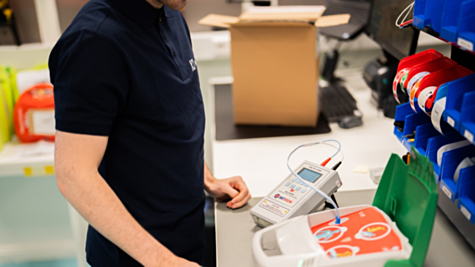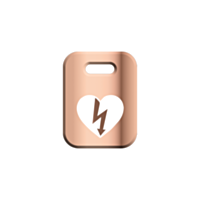Ultimate guide to defibrillator maintenance

In emergency situations, a reliable Defibrillator can make all the difference, but just having a defibrillator is not enough. Regular defibrillator maintenance is crucial to ensure that it is fully working when you need it most. In this guide, we cover everything you need to know about maintaining your defibrillator, including inspecting your device, understanding status indicators and troubleshooting.
The importance of defibrillator maintenance
Defibrillator maintenance is not just good practice, it is a life-saving necessity. Regular maintenance ensures that the device functions correctly during CPR. Neglecting maintenance can lead to device failure, which as you can understand, could have serious negative consequences. In addition, it is common for electrodes to have expired, making them unusable.
During CPR in a cardiac arrest, every second is vitally important, so make sure your defibrillator is always ready for use!
Regular defibrillator check
Inspection is an important part of defibrillator maintenance. By regularly inspecting your defibrillator, you can spot potential problems before they become critical. Below is what you should look out for:
- Power supply - Keep a close eye on whether the battery capacity is sufficient. Unfortunately, not every defibrillator indicates how full the battery is. You should keep track of this yourself. Battery life for defibrillators varies between 2 and 7 years (depending on the type of defibrillator). As soon as the battery has been inserted into the defibrillator, the service life starts. However the lifespan can be affected by various factors, such as a deployment of the defibrillator, age of the device and storage conditions. When the battery voltage becomes too low, the defibrillator will notify you via the status indicator, such as a blinking light. You can read more about defibrillator battery life on our website.
- Readiness of electrode pads - Check that electrode pads are intact, properly sealed and have not expired.
- Hygiene - Keep the defibrillator and its components clean and dust free.
- Defibrillator status check - Check that the device's status indicator shows that it is ready for use.
Understanding your defibrillator's status indicators
Defibrillators are designed to perform regular self-checks and will alert you if there is a problem. Read the user manual carefully to see what the status lights on your defibrillator mean, as the following does not apply to every defibrillator brand (for example the DefiSign defibrillator). Pay attention to these indicators during your defibrillator check:
- Positive indicator, often a green (flashing) light: All systems are working! Your defibrillator is ready for use.
- Negative indicator, often a red (flashing) light, possibly in combination with beeps - Something is wrong. The battery may be low, the electrode pads have expired or there is some other malfunction. Investigate and act immediately.
Ignoring these signals can lead to defibrillator failure at a critical time, so always address warnings immediately. If your defibrillator starts beeping or the light flashes (red), this indicates that something is wrong. Refer first to the user manual for troubleshooting steps specific to your model. Common problems include:
- Battery low - Replace the battery with a new one.
- Expired electrode pads - Replace the electrodes immediately.
Addressing these problems immediately will keep your defibrillator reliable and always ready to save lives.
Troubleshooting defibrillators
Even with regular defibrillator maintenance, malfunctions can occur. Here is how to deal with them:
- Resetting the device - Sometimes a simple reset can fix minor problems. Follow the manufacturer's instructions for resetting your defibrillator.
- Professional inspection - If you cannot solve the problem, contact Medisol International or a certified service partner for a thorough inspection and repair. If you bought your defibrillator from Medisol, or are interested in purchasing a defibrillator maintenance plan with Medisol, you can always contact one of our specialists for an inspection of your defibrillator.
Maintaining a properly functioning defibrillator is essential to ensure that it works properly in the case of an emergency. Regular checks, understanding status indicators and troubleshooting are all part of a solid defibrillator maintenance routine. With these practices, you can be confident that your defibrillator is ready to provide life-saving assistance at any time.
Stay prepared with a maintenance plan from Medisol
Defibrillator maintenance is an essential part of owning this life-saving device. By regularly inspecting your defibrillator, understanding its warning signals and fixing malfunctions immediately, you can ensure that it is always ready for use in an emergency. Don't wait for a crisis to realise that your defibrillator is malfunctioning. Stay proactive, stay prepared and make sure that your defibrillator is always in top condition.
Interested in defibrillator maintenance by a professional? With a maintenance plan from Medisol, you will have peace of mind when it comes to the maintenance of your defibrillator. We recommend having your defibrillator checked annually to ensure that your device is always in top condition and equipped with all the latest software updates. The button below will take you to an overview page of all maintenance plans and you can read exactly what they entail to choose the right plan for your situation.
